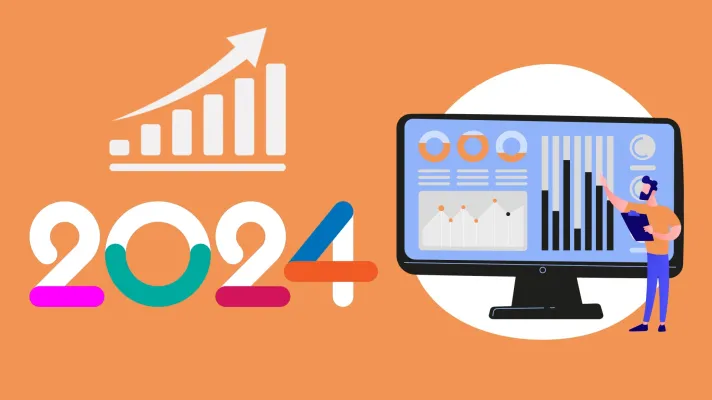
Social media has become a crucial component of every effective marketing strategy in the present digital era. You must create excellent social media reports if you want to keep track of and evaluate the success of your social media endeavors.
Defining Objectives and KPIs
Clear objectives and key performance indicators (KPIs) should be established before getting started on a social media report. Establish your goals for using social media, such as raising brand awareness, boosting website traffic, or generating leads. Once your objectives are in place, choose pertinent KPIs that fit your aims. Examples of common KPIs include reach, engagement rate, conversion rate, click-through rate, and follower growth.
Gathering Data
To create an accurate and insightful social media report, you need to gather data from various sources. Social media platforms provide built-in analytics tools that offer valuable metrics. To get more thorough data, you can also use third-party analytics solutions. assemble statistics on post reach, impressions, clicks, likes, remarks, shares, and conversions. It’s important to collect data over a specific time period to observe trends and measure performance accurately.
Choosing the Right Reporting Tools
Selecting the appropriate reporting tools is essential for streamlining the reporting process and ensuring accuracy. Numerous social media management platforms have robust reporting tools that make it simple to create customized reports. These solutions offer ready-to-use templates, choices for data visualization, and capacities for automated reporting. Depending on your demands for reporting, compare various tools and choose the one that best meets them.
Structuring Your Social Media Report
A well-structured social media report makes it easier for readers to understand the data and draw meaningful insights. Start with an engaging executive summary that summarizes the main conclusions and advice from the report. Divide the report into sections that each concentrate on a different facet of your social media performance. Make your information easy to read and browse by using headers and subheadings that are clear.
Analyzing and Interpreting Data
You must study and comprehend the material provided to you. Look for patterns, trends, and correlations in the data to acquire a better understanding of your social media performance. Learn what functions well and what may be improved. Use data-driven insights to shape your future social media strategy. It’s also essential to benchmark your performance against industry standards and competitors to gauge your effectiveness.
Visualizing Data with Graphs and Charts
Data visualization is key to presenting complex information in a clear and digestible format. Incorporate graphs, charts, and infographics in your social media report to make the data more engaging and visually appealing. Visual representations help readers quickly grasp the information and draw conclusions. Choose the most appropriate type of visualizations for each data point, whether it’s a line graph, bar chart, pie chart, or heat map.
Visualizing Data with Graphs and Charts
Data visualization is key to presenting complex information in a clear and digestible format. Incorporate graphs, charts, and infographics in your social media report to make the data more engaging and visually appealing. Visual representations help readers quickly grasp the information and draw conclusions. Choose the most appropriate type of visualizations for each data point, whether it’s a line graph, bar chart, pie chart, or heat map.
Key Metrics to Include in Your Report
Key metrics that give a complete picture of your success should be included when producing a high-quality social media report. Some crucial metrics to take into account are:
Reach and impressions
Engagement rate
Click-through rate (CTR)
Conversion rate
Follower growth
Top-performing content
Social media referral traffic
Customer sentiment analysis
Return on investment (ROI)
Cost per acquisition (CPA)
Include these metrics in your report to showcase the effectiveness of your social media campaigns and demonstrate the value they bring to your organization.
Providing Actionable Recommendations
A social media report is not just about presenting data; it should also provide actionable recommendations based on the insights gained. After analyzing the data and identifying areas for improvement, offer specific recommendations to optimize your future social media strategies. These recommendations could include content optimization, audience targeting adjustments, ad campaign refinements, or platform-specific tactics. Providing actionable insights helps your team make informed decisions and drive better results.
Conclusion
High-quality social media reports are required to make data-driven decisions and comprehend the outcomes of your social media campaigns. By following the recommendations in this article, you may produce a well-informed report that celebrates your accomplishments, identifies areas for development, and provides insightful advise. Maintaining your efforts over time will require keeping up with social media developments and modifying your reporting strategies as needed
FAQs
How often should I create a social media report?
A social media report should be created at least once a month. However, based on your unique needs and the pace of your social media activities, the frequency may vary.
Can I automate the process of creating social media reports?
Yes, you can automate the process of creating social media reports using specialized reporting tools. These tools can help you save time and ensure consistent reporting across different platforms.
What should I do if my social media metrics are not meeting my objectives?
If your social media metrics fall short of your goals, it’s time to rethink your strategy and make the required changes. Experiment with several ways, analyze the consequences, and iterate until you reach the desired results.
How can I track social media ROI?
To track social media ROI, you need to establish clear goals and assign value to each objective. Track conversions, leads, and revenue generated from social media campaigns and calculate the return on investment based on these metrics.
How can I improve engagement on social media?
To increase social media engagement, focus on providing interesting and relevant content, encouraging audience participation through questions and surveys, responding to comments and messages as soon as possible, collaborating with influencers, and analyzing the performance of your postings.






